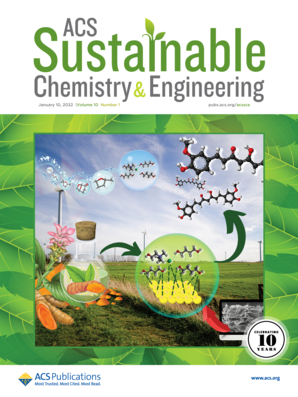Development of Xanthan Gum Hydrogels Cross-Linked with Olive Mill Wastewater: A Sustainable Approach to Reusing Olive Oil Residues
IF 7.1
1区 化学
Q1 CHEMISTRY, MULTIDISCIPLINARY
引用次数: 0
Abstract
To achieve sustainable agriculture, it is essential to develop and adopt innovative technologies that take advantage of alternative raw materials and provide effective solutions for industrial waste management. This study focuses on the development of xanthan gum (XG) hydrogels cross-linked with olive oil mill effluent (OMW), a byproduct of the olive oil industry, and explores their application as an innovative strategy for water retention and soil conditioning. Biobased hydrogels are superabsorbent polymers capable of retaining large amounts of water, improving soil hydration, and reducing water stress in crops. The synthesized hydrogels were extensively evaluated through chemical characterization, swelling capacity tests, water retention performance, and thermogravimetric and morphological analyses to elucidate their structural and cross-linking properties. The results showed that the use of OMW as a cross-linking agent allowed the formation of hydrogels with exceptional water absorption capacities, ranging from 6000% to 14,000% (wt %). The analyses confirmed the successful incorporation of OMW into the polymer matrix, highlighting the interactions between the carboxyl and hydroxyl groups characteristic of the material. Furthermore, all hydrogels demonstrated the ability to retain water for up to 7 days, presented biodegradability, and did not exhibit phytotoxicity, reinforcing their suitability for agricultural applications. The OMW/XG hydrogel stands out as an economically viable and environmentally sustainable solution, offering significant potential to improve water management in agriculture. In addition to its water retention capacity, this hydrogel paves the way for the incorporation of fertilizers, creating multifunctional materials with broader applications in agriculture and horticulture. Overall, this work presents an innovative and practical approach to valorizing olive oil mill effluent as a cross-linking agent, contributing to sustainable agricultural practices and promoting the circular economy within the olive oil industry.橄榄厂废水交联黄原胶水凝胶的研制:橄榄油废渣可持续再利用的途径
为了实现可持续农业,必须开发和采用创新技术,利用替代原料,并为工业废物管理提供有效的解决方案。本研究主要研究了黄原胶(XG)水凝胶与橄榄油工业副产品橄榄油厂废水(OMW)交联的开发,并探讨了其作为一种创新的保水性和土壤调理策略的应用。生物基水凝胶是一种高吸水性聚合物,能够保留大量的水,改善土壤水化,减少作物的水分胁迫。合成的水凝胶通过化学表征、膨胀能力测试、保水性能、热重和形态分析进行了广泛的评估,以阐明其结构和交联特性。结果表明,使用OMW作为交联剂可以形成具有优异吸水率的水凝胶,吸水率从6000%到14000% (wt %)不等。分析证实了OMW成功地结合到聚合物基体中,突出了材料特征的羧基和羟基之间的相互作用。此外,所有水凝胶都具有长达7天的保水能力,具有可生物降解性,并且不会表现出植物毒性,从而增强了它们在农业应用中的适用性。OMW/XG水凝胶作为一种经济可行且环境可持续的解决方案脱颖而出,为改善农业用水管理提供了巨大的潜力。除了保水能力外,这种水凝胶还为肥料的掺入铺平了道路,创造了在农业和园艺中具有更广泛应用的多功能材料。总的来说,这项工作提出了一种创新和实用的方法,将橄榄油厂的废水作为交联剂,为可持续农业实践做出贡献,并促进橄榄油行业的循环经济。
本文章由计算机程序翻译,如有差异,请以英文原文为准。
求助全文
约1分钟内获得全文
求助全文
来源期刊

ACS Sustainable Chemistry & Engineering
CHEMISTRY, MULTIDISCIPLINARY-ENGINEERING, CHEMICAL
CiteScore
13.80
自引率
4.80%
发文量
1470
审稿时长
1.7 months
期刊介绍:
ACS Sustainable Chemistry & Engineering is a prestigious weekly peer-reviewed scientific journal published by the American Chemical Society. Dedicated to advancing the principles of green chemistry and green engineering, it covers a wide array of research topics including green chemistry, green engineering, biomass, alternative energy, and life cycle assessment.
The journal welcomes submissions in various formats, including Letters, Articles, Features, and Perspectives (Reviews), that address the challenges of sustainability in the chemical enterprise and contribute to the advancement of sustainable practices. Join us in shaping the future of sustainable chemistry and engineering.
 求助内容:
求助内容: 应助结果提醒方式:
应助结果提醒方式:


